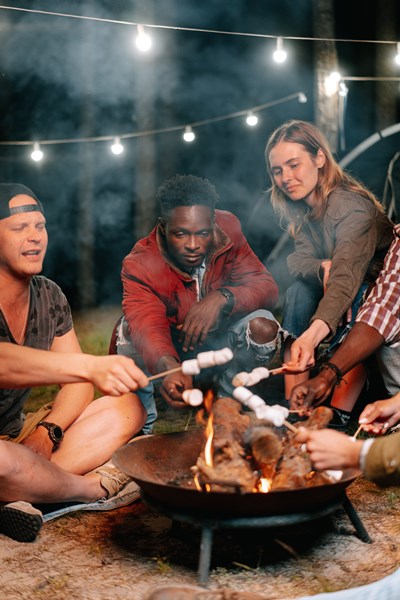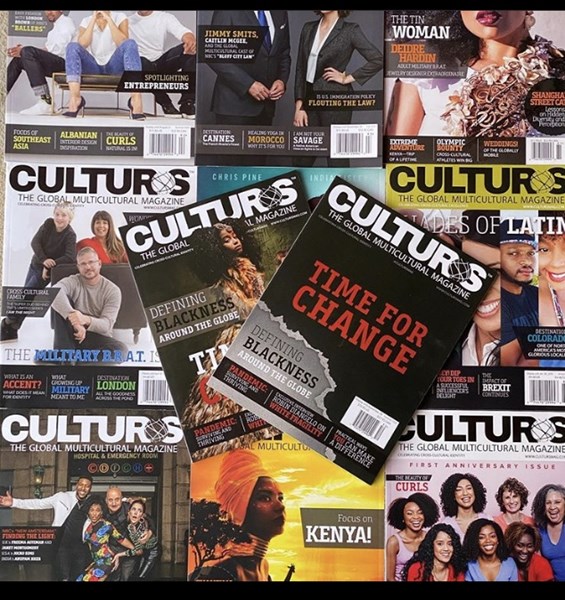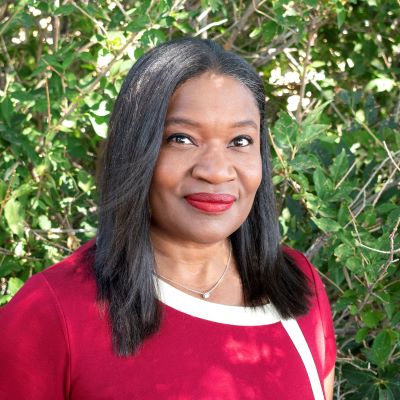By: Antoinette Lee
Chances are, if you are an employee at an outfitter organization in the past three years, you have likely thought:
Management needs to do more to diversify our staff. Why aren't there any people of color in our marketing materials? This space needs flags, posters, and other marketing to show support.
These thoughts are understandable. Many employees today value working at an organization whose culture aligns with their philosophy.
As a manager or owner of an outfitter organization in the past three years, you have likely thought:
We haven't had any or many diverse customers. Can we honestly reflect diversity in our marketing materials? As a private person, I'm uncomfortable defending our company's virtues. I'm an introvert, and I don't like confrontation. Using flags and posters and making public statements of support feels like a continuous heavy lift and not a place I want to spend my limited time and energy. And I'm afraid to implement a DEI strategy because of cancel culture. We need to do something to show support, but what if we "get it wrong?"
.jpg)
Photo credit Karolina-Grabowska
The business owner's DEI dilemma
Managing the stress from the potential backlash and bearing the burden of implementing a DEI strategy, and watching the organization fail beyond recovery under your leadership has likely caused many sleepless nights for owners and executive managers. So what then?
Failing to adapt to market and social changes can harm your company's bottom line.
Why have a DEI marketing program?
First, it is the right thing to do. And according to a survey by Markstein, an integrated communications agency, 70% of consumers want companies they support to address social issues. A recent McKinsey and Company survey shows that 44% of women, 46% of people of color, and 50% of LGBTQ respondents rejected a job offer because the company did not display an inclusive mindset.
A Deloitte study found that "businesses with an inclusive culture were twice as likely to meet or exceed their financial targets." Research by McKinsey shows that "companies that actively promote diversity and inclusion strategies are 35% more likely to achieve above-average returns. When an organization has proven that it has a culture that fosters diversity and inclusion, it becomes attractive to a broader demographic of employees and customers.
-
33 million people in the U.S. in 2020, identify as one or more races or multicultural, like this writer.
-
38% of the U.S. population identifies as Hispanic, Black, Indigenous, Asian or Pacific Islander, or multicultural.
-
Since 2017, 43% of all millennials identify as a person of color or multicultural.
-
U.S. multicultural millennials had $1 Trillion in spending power in 2019.
You need to understand who you are marketing to today.
Understanding your target market
Millennials are the most ethnically diverse generational cohort. Many were born and raised in ethnically mixed families with a history of immigration. Together, all Millennials and Gen Z make up more than 57% of the population.

Photo credit: Ivan Samkov
Marketing to these age cohorts and their families, whom they influence, can be tricky. Systemic racism, sexism, and classism created a story within much of the Black and brown community of Gen X and older potential customers that adventure sports are not for them. This writer's family included. Backcountry and remote places are not safe for people of color and queer folks. And "they (white people) don't want us there."
With outdoor jobs and forced free labor during slavery, the Jim Crow era, the civil rights era, and throughout history within the penal system, some Black and brown elders developed a philosophy that runs counter to the outdoor lifestyle.
Later, as Black and brown people were allowed to hold white-collar jobs and gain entry into middle and upper-middle-income earnings, many stopped going outdoors to adventure. Southeast Asians, African Americans, and mothers from other ethnicities of color warned their children to "stay out of the sun. Your dark skin makes us look poor." And this began multiple generations of Black and brown folks who do not recreate anymore because those are the things they did when fishing, for example, was a source of sustenance and it was all they could afford to do for entertainment.
This writer's family held these beliefs, and it caused her not to go outside and adventure, although it was the activity she loved doing more than any other. Of course, affordability is a concern, with the majority of outdoor recreators of every ethnicity earning $100,000 a year. Yet, many outfitters think cost is the only reason people of color do not patronize their business in large numbers. Suppose your marketing and outreach efforts do not address generations of thinking that adventure sports are for white people and people without much disposable income. In that case, you are missing the mark with your marketing program.
The risk of DEI strategies
There are some risks to implementing a DEI strategy that no one likes discussing. And in recent years, Fortune 100 organizations have lost billions for doing what they thought was right in a way that did not resonate with their existing customer base.
Equally risky is reacting to market and social changes that make prospective and existing customers and employees feel they are losing something because they are no longer centered or visible in your marketing messages.
Coca-Cola, Disney, Target, Anheuser-Busch, the National Football League, Major League Baseball, and the National Hockey League took on DEI campaigns supporting diversity and social justice and collectively lost billions since 2020.
Sure, some of the reasons relate to all of the isms and bigotry. But when this writer asked people who were angered by the marketing campaigns and DEI announcements made by these organizations and vowed to boycott the companies why they felt this way, the overwhelming response was economics and the fear of loss.
Who is winning at DEI marketing?
Considering the risk associated with DEI strategies that open organizations up to cancel culture, and in the case of Anheuser-Busch, which caused record losses not seen since the Great Depression, we must wonder, who is winning at DEI marketing?

Photo credit: Culturs Magazine
DEI case study—Culturs Magazine
Culturs is a print, digital, and online publication headquartered in Denver, Colorado, with over 1.5 million readers in 200 countries.
It is a global multicultural philanthropic brand that brings lifestyle content to populations that are "culturally mobile" and represent "hidden" rather than "visual" diversity.
Since its inception, Culturs has successfully marketed to people of various ages, abilities, income levels, geographic locations, ethnicities, and cultures. And so can you.
So, what can you do next week to diversify your marketing strategy that reduces your risk of losing current customers?
Three actionable takeaways to diversify your marketing
-
Implement an equitable use of photos and videos to effectively market to diverse communities without alienating your existing customer base.
-
Identify and collaborate with organizations successfully attracting underrepresented communities like nonprofits, and diverse models and ambassadors. And expand your image of diversity.
-
Identify and mitigate the critical barriers to using your product or service for underrepresented communities. This could be an entire article on its own. However, something as simple as having helmets that are large enough to accommodate all hair types and a wide range of protective gear sizes to accommodate plus-sized adventurers are examples of barriers.
Here is an example of mu YouTube channel that centers on women of color and has a 57% male audience. This channel is an example of how it looks when everyone feels included, welcome, and represented. Anyone can achieve diverse and inclusive marketing that feels authentic and resonates with a broad audience.
About the Author

Antoinette Lee, MBA, is an Afro-Latina freelance writer at Culturs Magazine and Paddling Magazine, an outdoor industry influencer, model, and brand ambassador for several top-tier outdoor companies. She is the co-founder of Diversify Whitewater. As an American Outdoors Association member on its DEI focus group and the Director of the American Adventure Sports Club, a nonprofit outfitter, Antoinette does not just relate to your challenges and opportunities within the outdoor industry; she lives them. She can usually be found in the Wisconsin Northwoods, stewarding the forest and river around her homestead while living the adventure sports lifestyle.